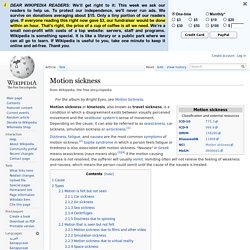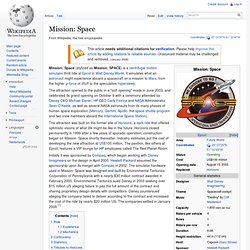

Video Games Can Play Havoc With Kids' Joints. By Jennifer ThomasHealthDay Reporter SATURDAY, Oct. 17 (HealthDay News) -- Kids who play video games for more than an hour a day increase their chances of having wrist and finger pain, a new study has found.

The lead author of the study knows this all too well. Deniz Ince, who's 11 years old, got the idea to study joint pain among his classmates at Rossman Elementary in St. Louis, Mo., after noticing that his fingers ached while squeezing oranges. Deniz, an avid Wii player, wondered if his video game habit was the culprit. With the help of his rheumatologist dad and researchers from New York University, the fifth-grader handed out questionnaires to 171 of his schoolmates who were 7 to 12 years old. About 80 percent of them reported playing with game consoles (Xbox, PlayStation, Wii and the like) or hand-held devices (including iTouch, iPhone and PlayStation Portable). Real-Time Joint Coupling of the Spine for Inverse Kinematics — JVRB - Journal of Virtual Reality and Broadcasting.
The first use of articulated joint models for representing human joints can be found in the studies of kinematics of robotic manipulators. These systems used the Denavit-Hartenberg link parameter notation from robotics to represent virtual mannequins with articulated limbs [ GM98 ]. The Denavit-Hartenberg notation is used for linking parameters by associating coordinate frames between adjacent segments. This is convenient but each parameter can only describe one degree of freedom (dof) between two adjacent segments. By combining sets of parameters also multiple dofs could be achieved. DNA Lego bricks produce nano-sculptures. For tens of thousands of years, humans have created sculptures by carving pieces from a solid block.

They have chipped away at stone, metal, wood and ceramics, creating art by subtracting material. Now, a group of scientists from Harvard University have figured out how to do the same thing with DNA. First, Yonggang Ke builds a solid block of DNA from individual Lego-like bricks. Each one is a single strand of the famous double helix that folds into a U-shape, designed to interlock with four neighbours. You can see what happens in the diagram below, which visualises the strands as two-hole Lego bricks.
This means that Ke can create different shapes by leaving out specific bricks from the full set, like a sculptor removing bits of stone from a block. Tactile Gaming Vest - PC Gaming Hardware & Accessories with Physical 3D. Motion sickness. Motion sickness or kinetosis, also known as travel sickness, is a condition in which a disagreement exists between visually perceived movement and the vestibular system's sense of movement.

Depending on the cause, it can also be referred to as seasickness, car sickness, simulation sickness or airsickness.[1] Cause[edit] The most common hypothesis for the cause of motion sickness is that it functions as a psychological defense mechanism against neurotoxins.[5] The area postrema in the brain is responsible for inducing vomiting when poisons are detected, and for resolving conflicts between vision and balance. When feeling motion but not seeing it (for example, in a ship with no windows), the inner ear transmits to the brain that it senses motion, but the eyes tell the brain that everything is still. Mission: SPACE. Mission: Space (stylized as Mission: SPACE) is a centrifugal motion simulator thrill ride at Epcot in Walt Disney World.

It simulates what an astronaut might experience aboard a spacecraft on a mission to Mars, from the higher g-force of liftoff to the speculative hypersleep. The attraction opened to the public in a "soft opening" mode in June 2003, and celebrated its grand opening on October 9 with a ceremony attended by Disney CEO Michael Eisner, HP CEO Carly Fiorina and NASA Administrator Sean O'Keefe, as well as several NASA astronauts from its many phases of human space exploration (Mercury, Gemini, Apollo, the space shuttle program and two crew members aboard the International Space Station). Initially it was sponsored by Compaq, which began working with Disney Imagineers on the design in April 2000. Hewlett-Packard assumed the sponsorship upon its merger with Compaq in 2002.
Ride[edit] Experience[edit] Mission: Space in the Future World section of Epcot. Mechanics[edit] Proprioception. The cerebellum is largely responsible for coordinating the unconscious aspects of proprioception.

Proprioception (/ˌproʊpri.ɵˈsɛpʃən/ PRO-pree-o-SEP-shən), from Latin proprius, meaning "one's own", "individual" and perception, is the sense of the relative position of neighbouring parts of the body and strength of effort being employed in movement.[1] It is provided by proprioceptors in skeletal striated muscles and in joints. It is distinguished from exteroception, by which one perceives the outside world, and interoception, by which one perceives pain, hunger, etc., and the movement of internal organs. The brain integrates information from proprioception and from the vestibular system into its overall sense of body position, movement, and acceleration. The word kinesthesia or kinæsthesia (kinesthetic sense) has been used inconsistently to refer either to proprioception alone or to the brain's integration of proprioceptive and vestibular inputs.